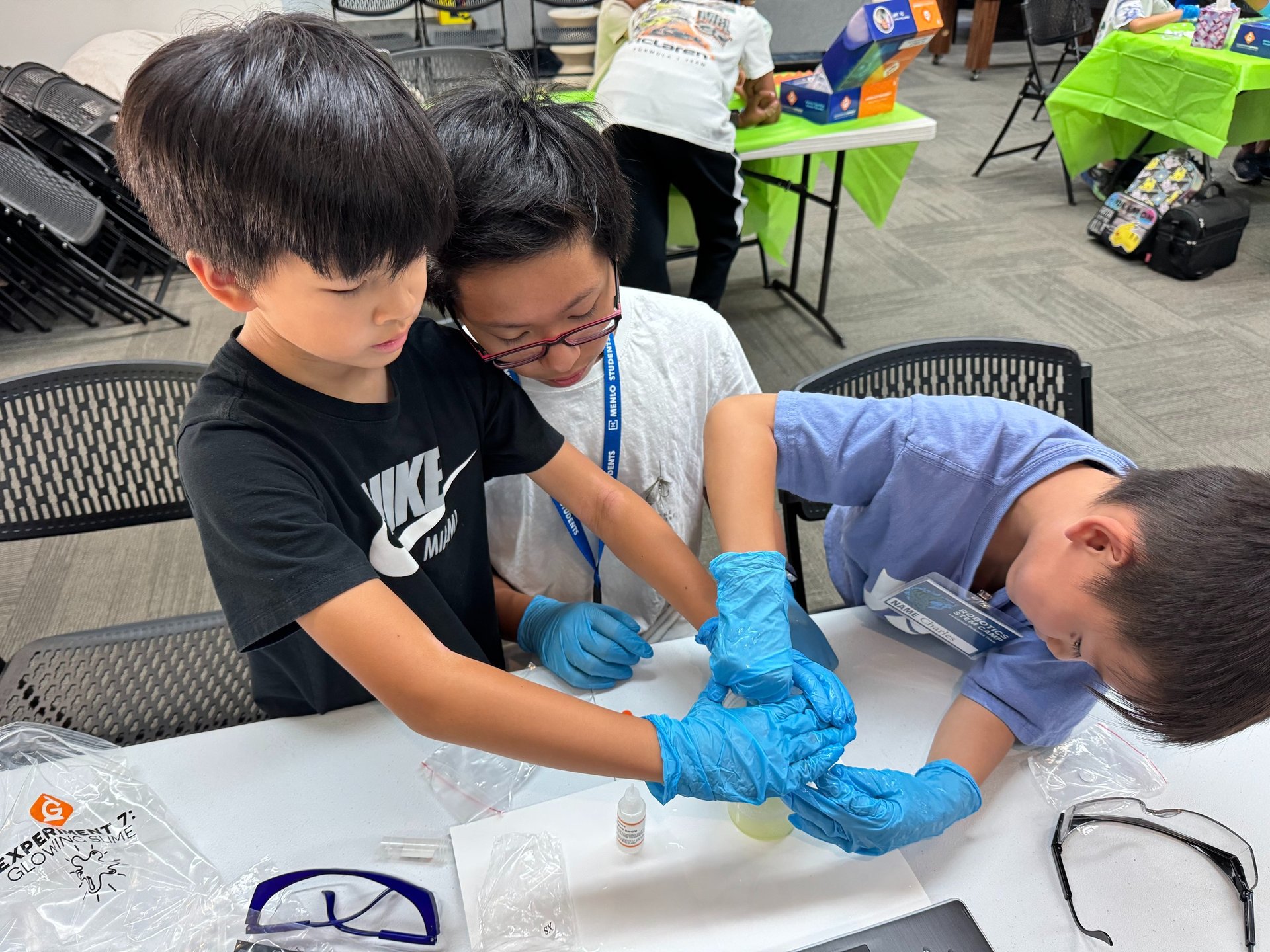
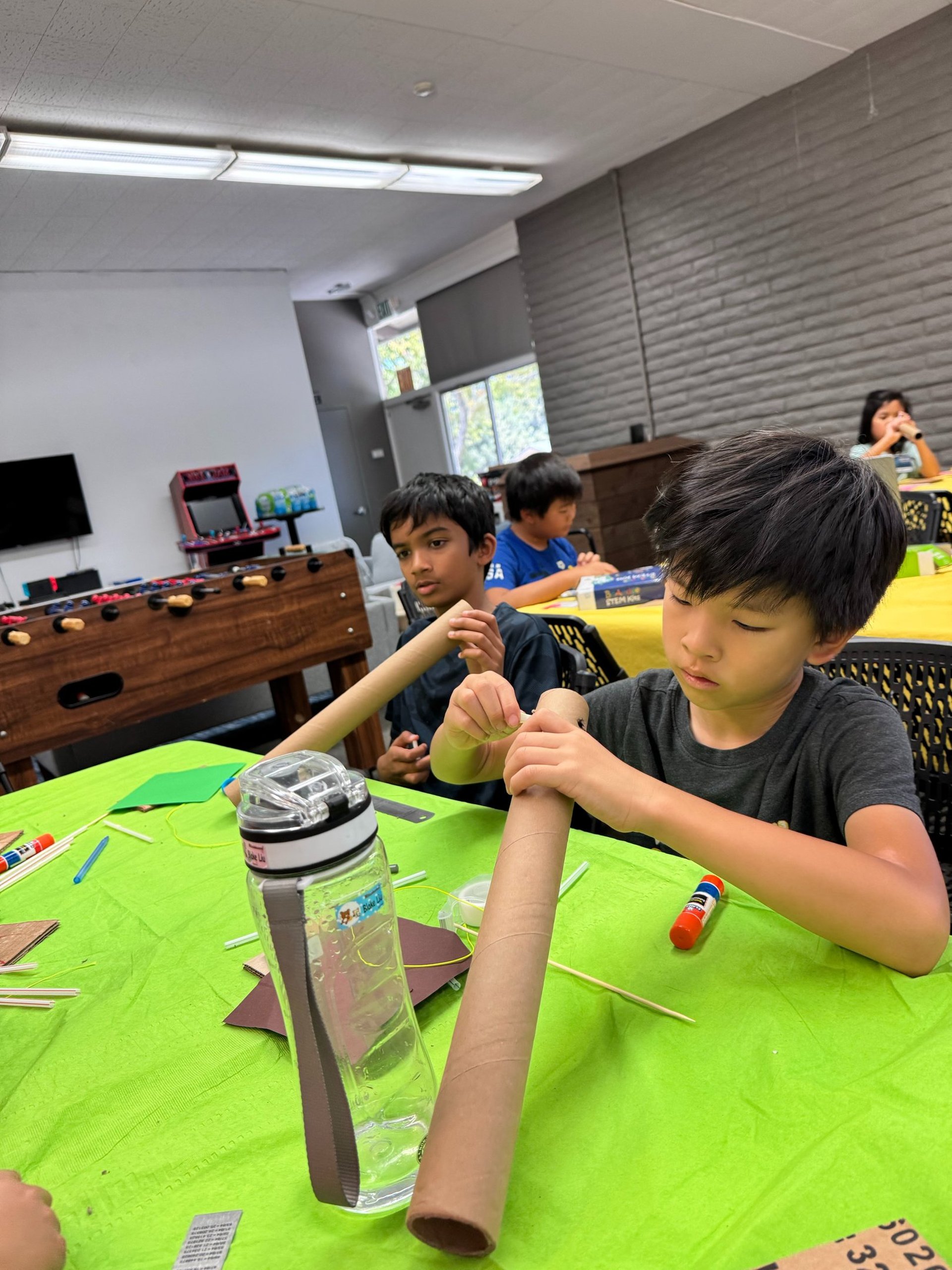
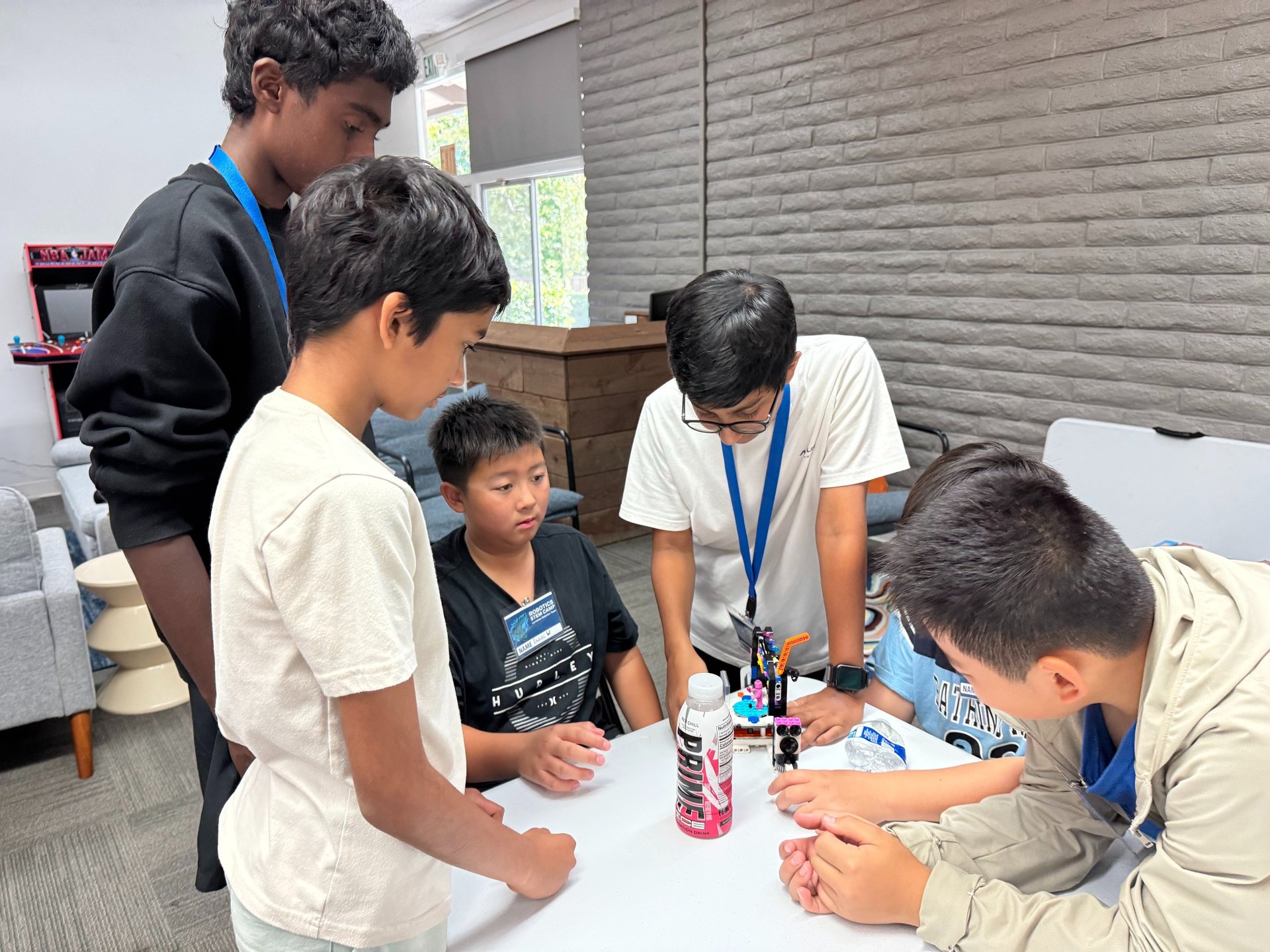
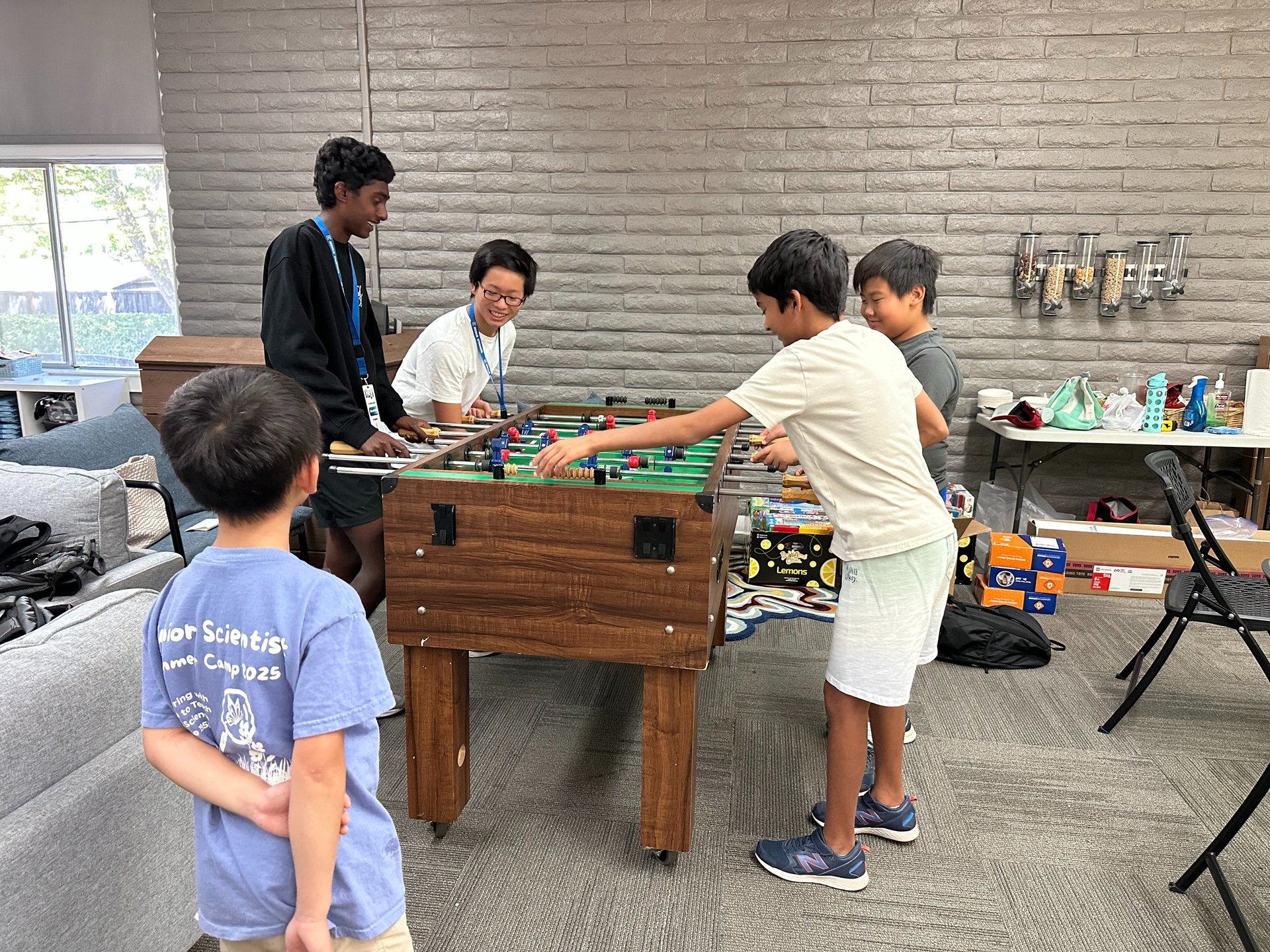
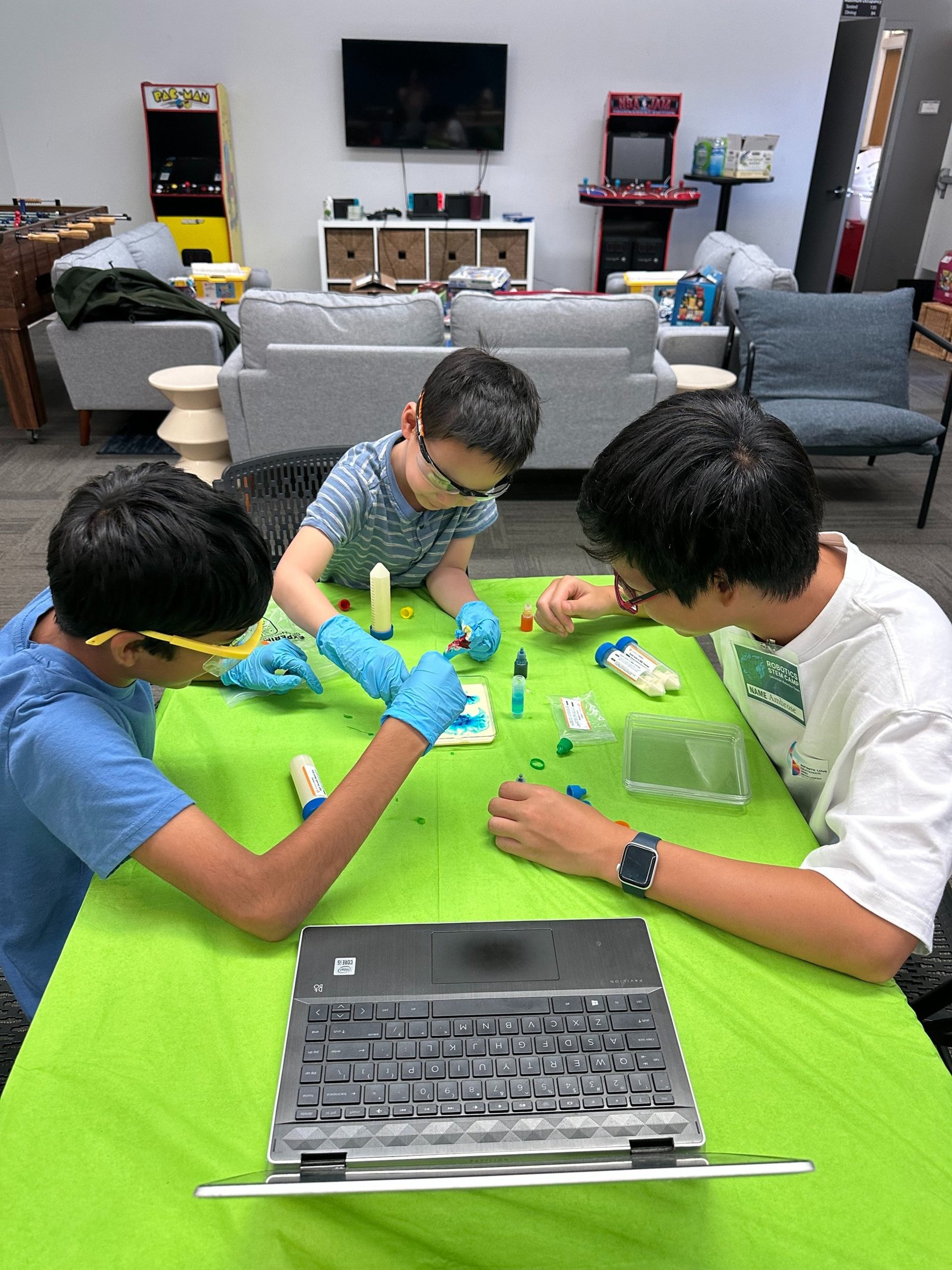
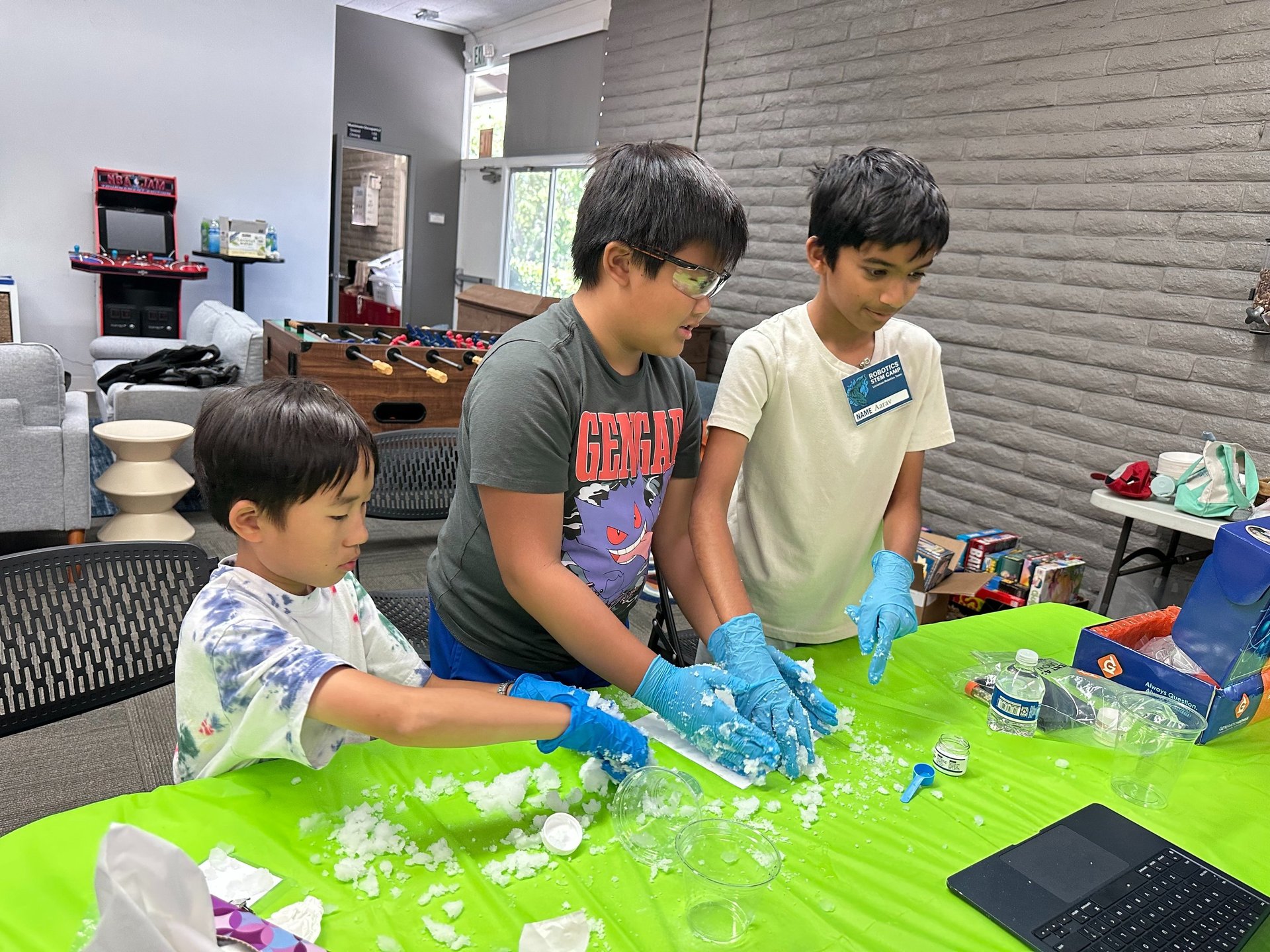
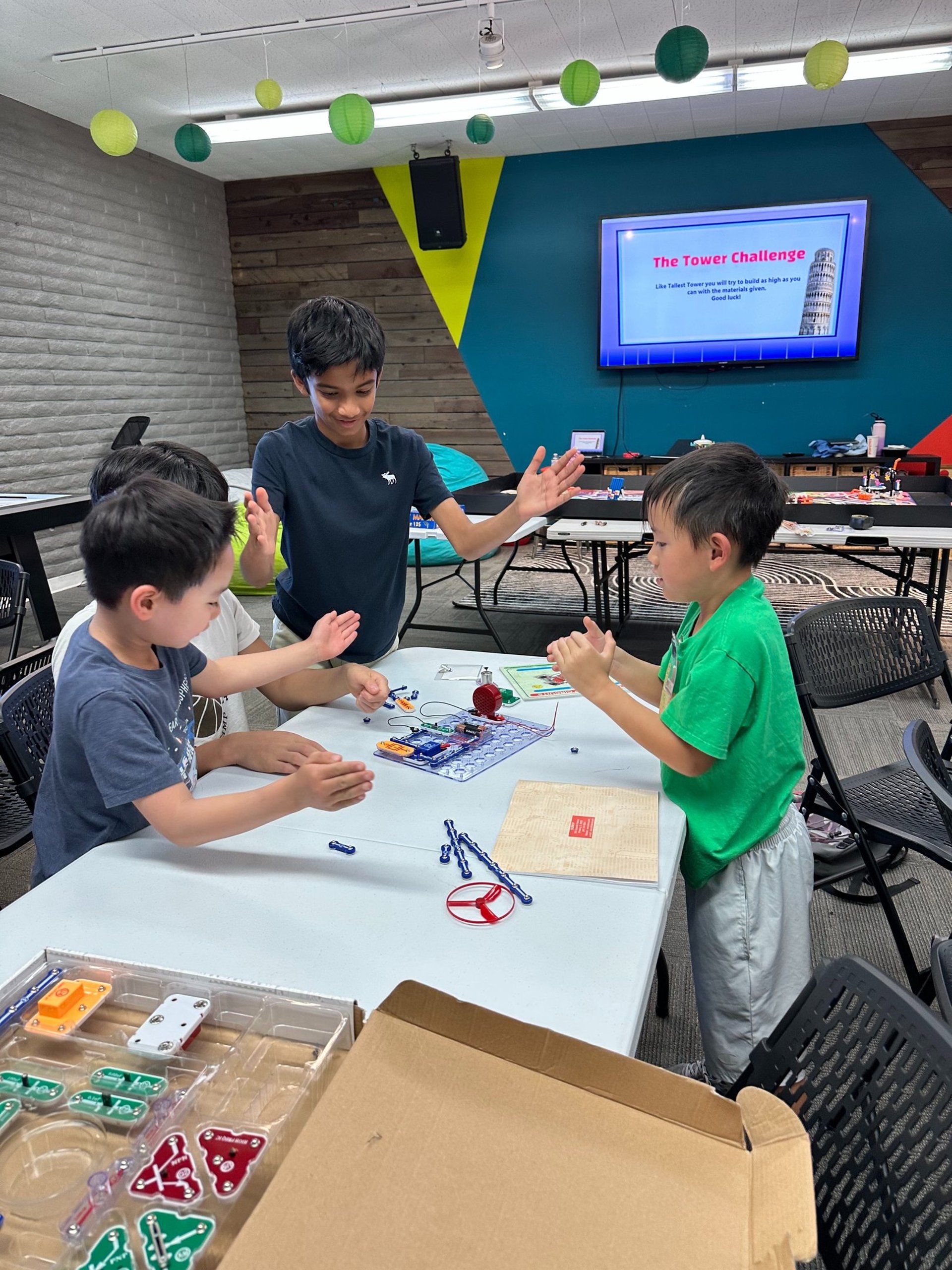
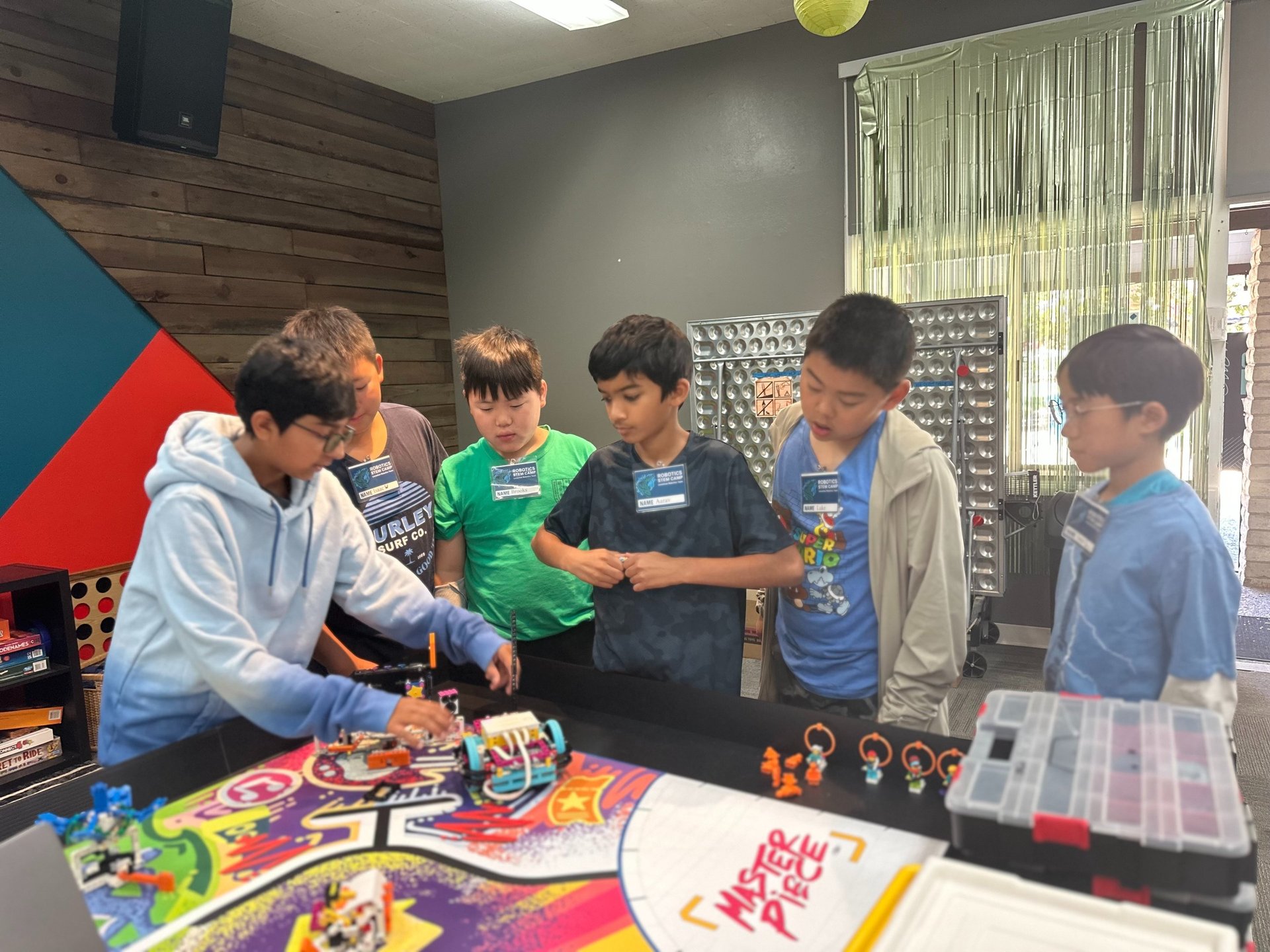
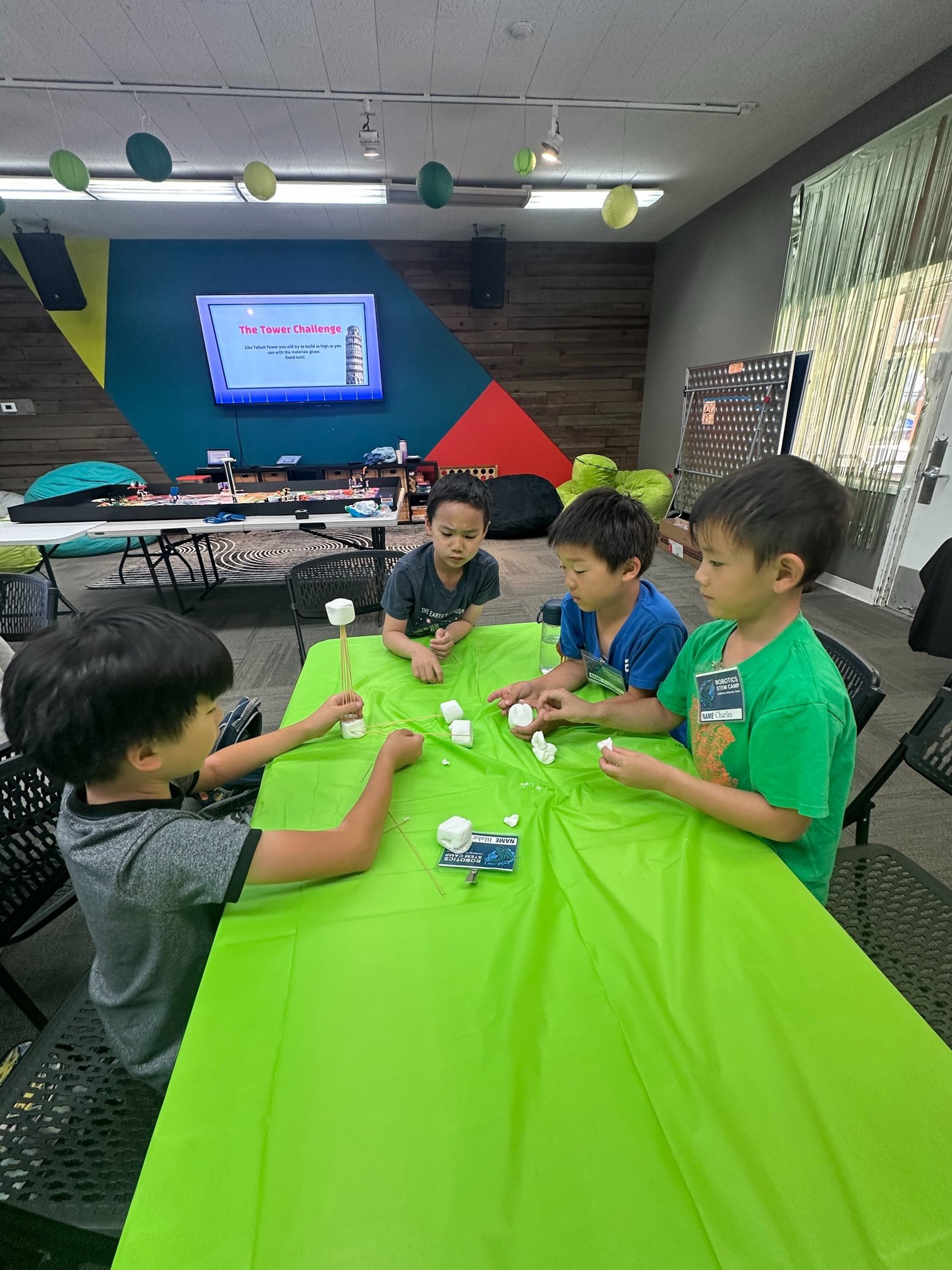

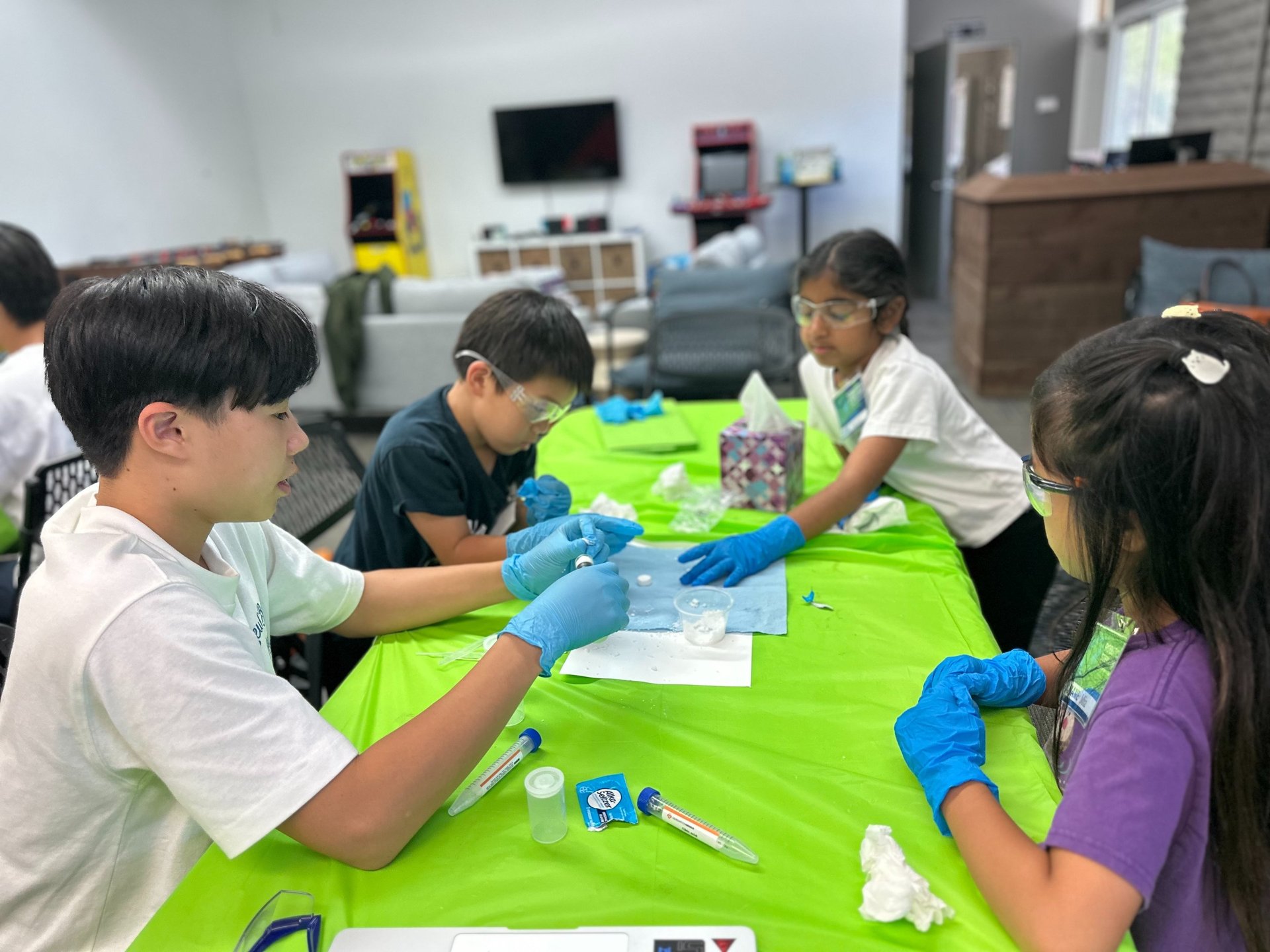
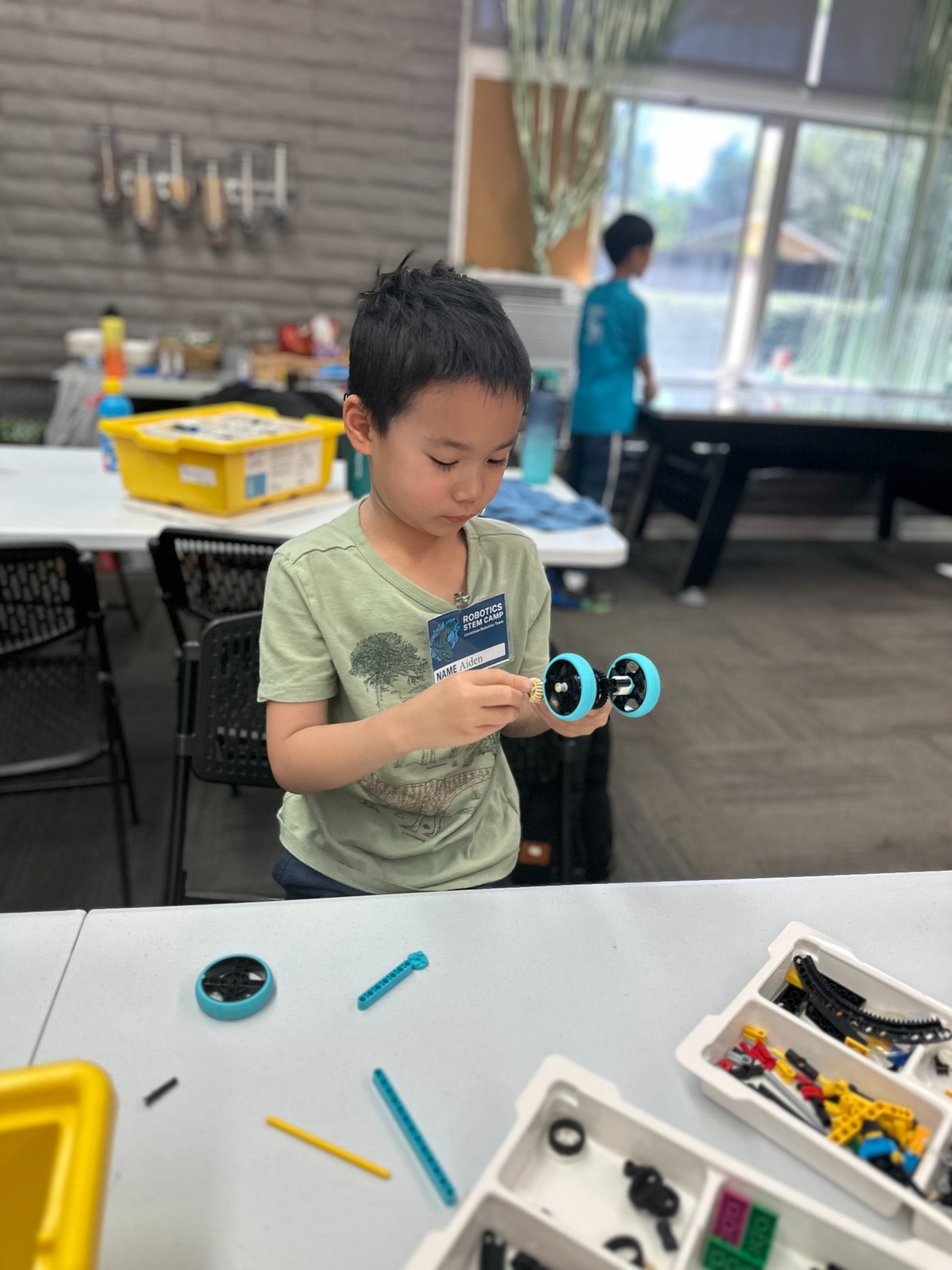
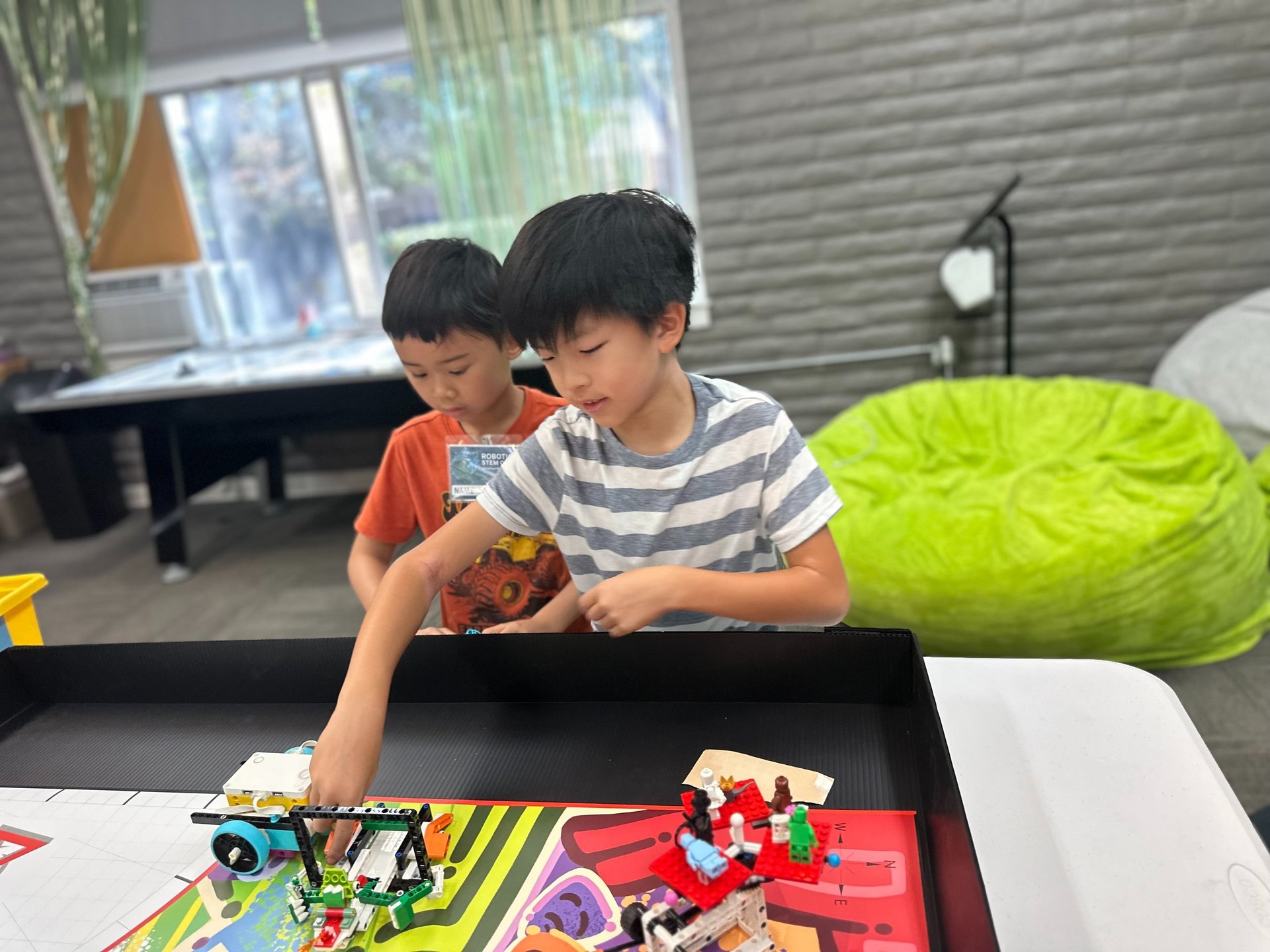
The Robotics Summer Camp
As the sun crept over the steeple of the charming local church, soft light spilled across the parking lot where families were already gathering. The sound of sneakers on pavement mixed with bursts of laughter and excited chatter. Children from second to fifth grade arrived carrying backpacks, water bottles, and the unmistakable energy that comes from knowing you’re about to spend a whole week doing something amazing.
This was the robotics summer camp—a fusion of learning, creativity, and fun. The schedule was ambitious yet inviting: mornings devoted to robotics with the structure of the First Lego League (FLL), afternoons packed with hands-on STEM experiments. Every day promises discovery, problem-solving, and the kind of teamwork that makes learning stick.
Day 1: Foundations of Robotics
On the first morning, campers stepped into a bright room filled with LEGO bins, robotics kits, and the smiling faces of instructors and volunteers. The instructors—our teammates—welcomed each child warmly and launched into an introduction to First Lego League.
Before long, the room was a whirl of snapping bricks and imaginative ideas. Kids tested their building skills by competing to see who could build the tallest LEGO tower. Some towers wobbled dangerously, others stood rock- solid, and every collapse brought a chorus of good-natured groans and laughter. The activity wasn’t just fun—it introduced the concepts of structural stability and iteration.
In the afternoon, the campers switched gears for their first Generation Genius STEM kits. Tables became mini- laboratories where children worked in small groups to explore science concepts. Some measured carefully, others made predictions, and all discovered that science could be just as thrilling as a game.
Day 2: Concepts of FLL
Tuesday’s focus was on understanding how the FLL game works. The campers learned how to earn points, the layout of the playing field, and the purpose of the many small props that make up a competition setup.
In small groups, they meticulously built each field element, following instructions with care. Once the props were assembled, teams carefully placed them in position, making sure they matched official competition standards. To reinforce their learning, instructors led an FLL trivia challenge. Questions sparked debates, quick thinking, and bursts of celebration whenever a correct answer earned the team another point.
The afternoon brought a rotation of three STEM activities:
Snap Circuits, where kids explored how electricity flows and learned about series vs. parallel circuits.
Wind Turbines are small working models that introduced motion, energy, and real-world applications like renewable energy sources.
The Tower Challenge, where spaghetti and marshmallows became engineering tools. The challenge quickly revealed a key lesson in civil engineering—the triangle is one of the strongest shapes.
By the end of the day, the room was scattered with half-built turbines, spaghetti fragments, and the kind of happy exhaustion that comes from solving problems together.
Day 3: Advanced Robotics and Creativity
Midweek brought a shift from basic building to programming intelligence into the robots. Campers were introduced to sensors— devices that allow robots to react to their environment. They learned how light sensors detect lines, how touch sensors respond to obstacles, and how these tools make robots more capable.
Armed with new knowledge, teams of five began designing their first competition-ready robots. Brains buzzed with ideas: “What if it turns faster?” “Can we make it grab the piece?” “Let’s add another sensor here!”
The afternoon was pure chemistry magic. Baking soda and vinegar volcanoes fizzed dramatically, while milk and food coloring experiments created mesmerizing swirls that revealed the science of surface tension. The room smelled faintly of vinegar, and the delighted “oohs” and “aahs” made it clear that hands-on science had left a big impression.
Day 4: Coding and Competition Prep
Thursday morning, laptops and tablets appeared alongside the LEGO robots. Campers dove into coding with the Spike Prime app, learning to control movement, timing, and sensor responses. Some groups experimented with line-following code, a more advanced programming challenge that required patience and precise logic.
The afternoon was a burst of activity with multiple STEM stations:
Generation Genius and Kiwi Co. kits encouraged problem-solving and creative engineering.
A pottery station allowed campers to try shaping clay, learning how art and engineering intersect.
A volcano-making station let them revisit chemical reactions, only this time with a flair for dramatic, foamy eruptions.
The day’s highlight was the Egg Drop Challenge. Teams worked together to design protective contraptions for raw eggs, using only the materials provided. Each design had to balance cushioning, aerodynamics, and creativity. When it came time to drop the eggs from the church balcony, the entire camp gathered below, craning their necks upward.
One by one, the eggs fell—some landing with a soft bounce and cheers, others meeting their end with a satisfying splat. Regardless of the outcome, every drop was met with applause.
Day 5: Reflection and Celebration
The final day was both a competition and a celebration. The morning’s event was a friendly robotics showcase where teams demonstrated their creations’ agility, speed, and problem- solving capabilities. Robots zipped through obstacle courses, navigated turns, and completed missions with varying degrees of success.
In the afternoon, the Egg Drop Challenge returned for its grand finale. This time, designs were refined and more daring—some with parachutes, others with intricate crumple zones. The crowd counted down before each drop, and every successful landing brought a wave of excitement.
Finally, the camp concluded with a celebration. Tables were lined with snacks, music filled the air, and campers mingled with new friends. Parents arriving for pickup could see it instantly: their children weren’t just leaving with new skills—they were leaving with confidence, curiosity, and memories they’d carry for a long time.
Conclusion
The robotics summer camp at the local church was a resounding success. The structure of FLL- focused mornings and STEM-rich afternoons struck the perfect balance between technical skill-building and playful experimentation. Campers learned engineering principles, coding, teamwork, and scientific reasoning—all while laughing, competing, and celebrating one another’s successes.
As the final cleanup began and the last LEGO bricks were tucked away, one thought echoed through the minds of all of the campers: "This was super fun!"
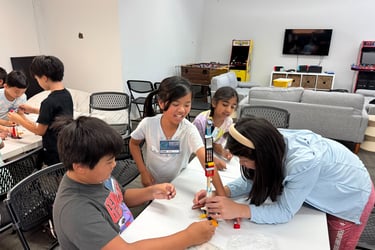

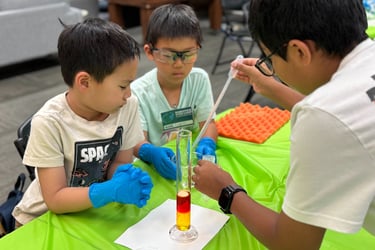

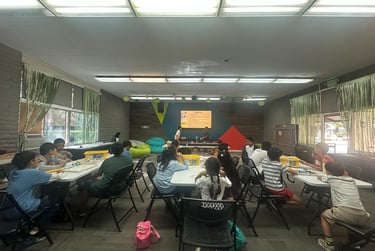

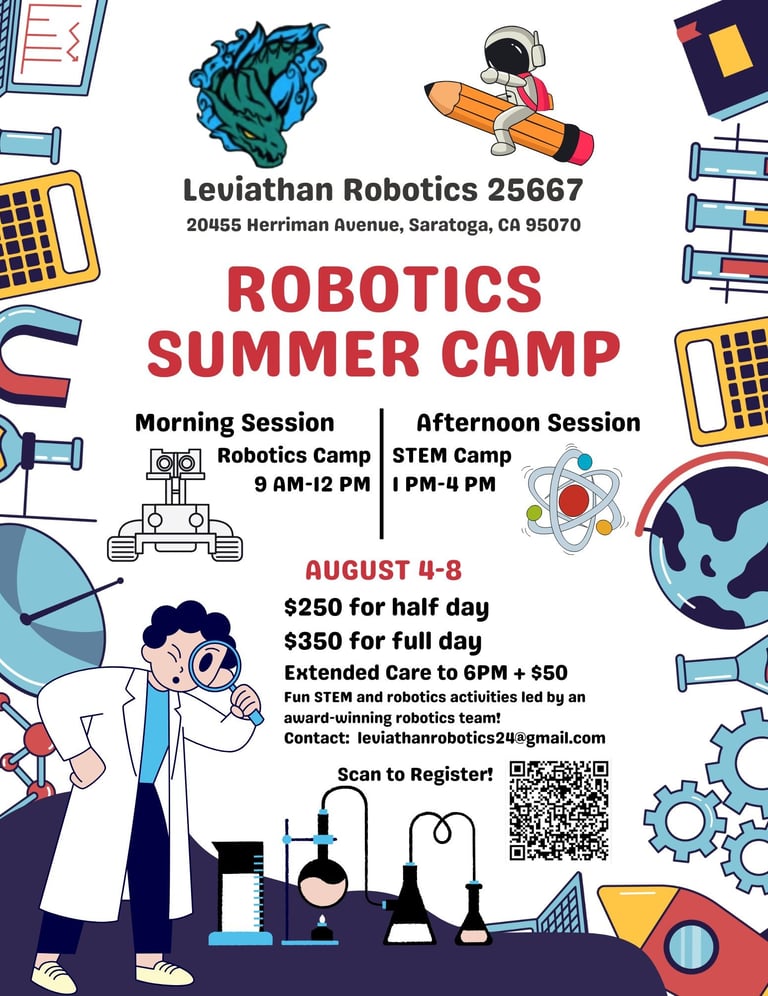


”I think the whole thing is great. My son usually doesn't like to attend camp, but he is very happy. Thank you for taking photos every day. I think it's great that I can discuss with my children.”
- Judy Wang
”It's really good! Amazing! My kid loves it!”
- Anonymous
”Aarav used to come back from camp very happy and excited.”
- Anonymous
"My son thoroughly enjoyed the camp. It was a great mix of robotics, STEM, and playtime. Very impressed with the instructors at this age! This week was a great intro for my 2nd grader."
- Anonymous
